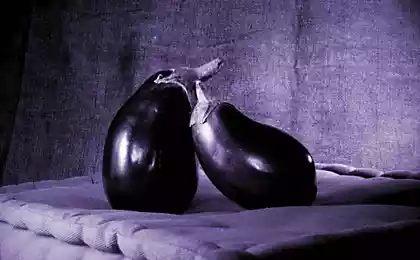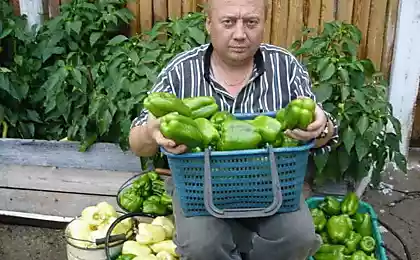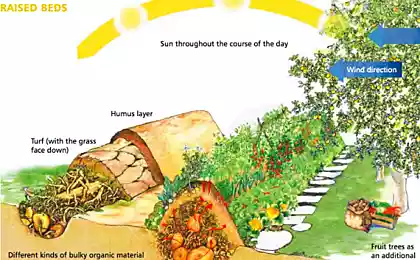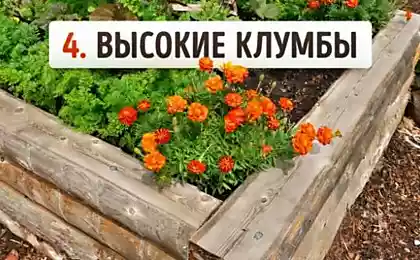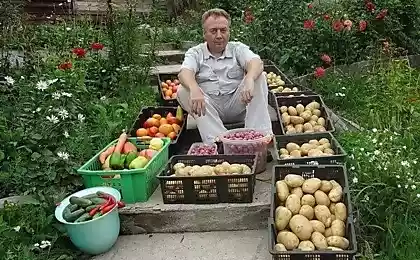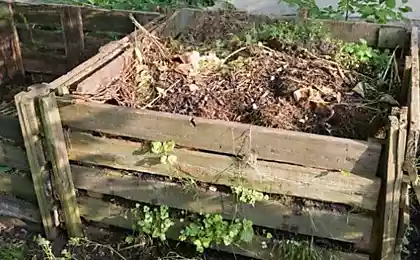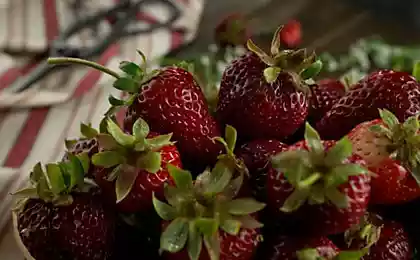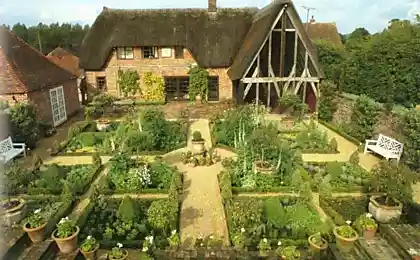669
Straw — the perfect solution for growing vegetables
Straw is ideal for growing vegetables. Its hollow stems are perfectly absorb and retain moisture and provide air access to the roots.At the time, like a straw inside the bales decomposes, providing plants with all necessary for growth.
Raised straw beds are particularly useful in areas of high groundwater and in areas of cities with cold climates, straw warms up much faster than soil.
Such a bed can be built anywhere, as long as the place was covered by at least 5 hours of direct sun.

Step 1. Search straw.
The bales need to prepare in late summer or autumn. Usually, there are no problems, straw can be bought from any farmer in the countryside or to look for ads on the Internet. Bales will fit from any of the plants(corn, wheat, oats, rye, rice, etc.), most importantly, that they were not hay, as hay can contain seeds of weeds which will be difficult to get rid of.
Step 2. The construction of the garden beds.
In the autumn of bales made the beds. The bales are stacked in rows, with spacing of 50-70 cm. Preliminary on the ground under bales is better to put cardboard or old Newspapers that hadn't germinated weeds. The bales are usually associated with string or wire, to remove them is not necessary, it will help the bales to maintain form.
Step 3. Preparation of straw.
Just the straw to plant the plants is impossible, the bales must be pre-prepared. In the fall need plenty of water and straw to make nitrogen fertilizers, the best option would be bird droppings. Before the frost it is necessary to keep the straw moist. The straw will start to decompose. In the spring two weeks before planting, bales must be watered with fertilizer(1 part bird manure, 1 part wood ash 1 part bone or fish meal). At this stage you can also build a shelter over the bale greenhouse and build a trellis.
Step 4. Planting.
If you are planting seedlings, make holes in the straw when the seedlings hollow roots, then add a few handfuls of earth, so that all roots were in the soil. If you are planting seeds, so in the hole, add a few handfuls of earth and planted seeds. On top sprinkle the earth with straw and water. Also when landing you should think about the compatibility of the plants.
Step 5. Care.
The only thing you need to do — it is time to water the garden. Organizing drip irrigation, you save yourself from these worries and you will only harvest. As the weeds in these beds will not grow, unless of course you have not used hay(straw does not contain weed seeds).
Step 6. After harvest
When does the season of harvest, the bales will be soft, saggy and gray — but that's exactly what you need. If you leave the straw for the winter, then the spring you will get a great compost. Or you can use the rest of the straw as mulch.
Also so you can handle the virgin. Stacking straw bales on untilled virgin lands you next year get a high straw beds, and in a year you will have loose and fertile soil covered with the remains of straw as mulch. published
P. S. And remember, only by changing their consumption — together we change the world! ©
Join us in Facebook , Vkontakte, Odnoklassniki
Source: ecology.md/page/soloma-idealno-podhodit-dlja-vyrashhivanija-ovoshhej





